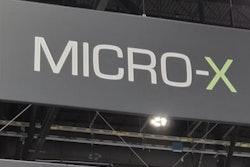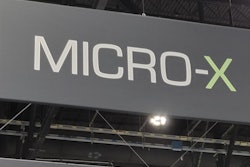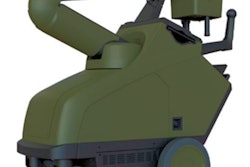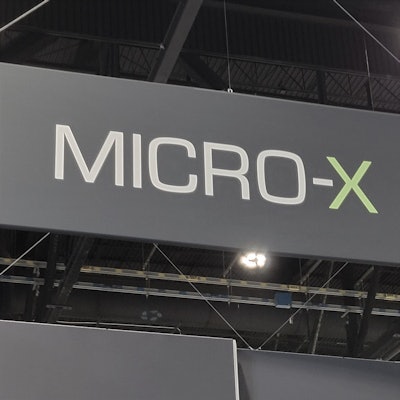
Australian x-ray developer Micro-X made its RSNA debut last month, displaying its carbon nanotube miniaturized x-ray tube technology. The company plans to leverage the design to offer x-ray systems that are lighter and more portable than existing systems.
Micro-X first announced its technology in 2016, saying it is planning to commercialize technology that was developed at the University of North Carolina at Chapel Hill and at Duke University. The technology, which Micro-X calls Nano Electronic X-Ray (NEX), uses a carbon nanotube as an electron emitter that provides more control over the x-ray focal spot than traditional technology -- at every kV and every mAs. This enables the development of a tube head weighing only about 14 lb.
That light weight means that Micro-X can dispense with much of the electric servo-driven motorized technology required to power conventional mobile x-ray systems. The company's mobile x-ray system weighs just 75 kg, a fraction of the 600-kg machines typically used in hospitals.
"The real advantage of 14 lb is that everything can be smaller, lighter, and simpler, and simpler means more reliable," said Peter Rowland, managing director of Micro-X. "With everybody else, the x-ray tube starts at 29 kg, so ... that's driving big arms and heavy weights, and so you've got to have motors and you've got to have counterbalancing."
The company then decided to design its own x-ray system, talking to radiographers and radiologic technologists about their needs, according to Peter Rowland, managing director of Micro-X. One such design element was putting controls at a level on the tube head that could be reached by the system operator, he said.
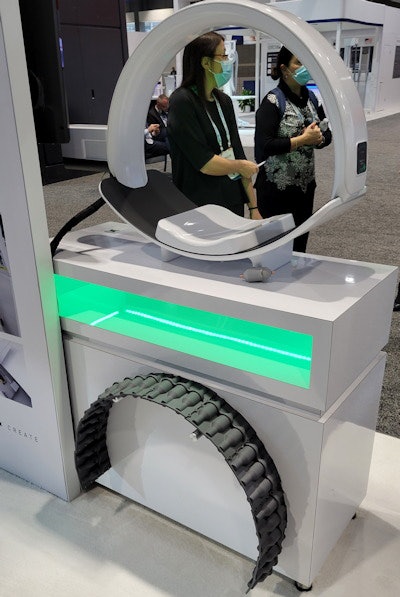 Micro-X is leveraging its carbon nanotube technology into a multisource x-ray system that can be mounted in an ambulance for stroke imaging.
Micro-X is leveraging its carbon nanotube technology into a multisource x-ray system that can be mounted in an ambulance for stroke imaging.Micro-X originally supplied its technology to Carestream Health, which has been marketing the system as the DRX-Revolution Nano. Last year, the companies amended their agreement to allow Micro-X to sell the system on its own, and since then Micro-X has sold 250 systems in 30 countries. It used the Nano design to develop Rover, a mobile x-ray system designed for military applications.
At RSNA 2021, Micro-X highlighted Pico, its next mobile x-ray system. The company also showed Neo, a system for neonatal and pediatric indications.
But Micro-X has also set its sights higher, and it intends to develop systems that promise to leverage the small size and light weight of carbon nanotubes to create radically new x-ray instrumentation. At RSNA 2021, the company showed a prototype of a system that featured a curved array of 29 x-ray tubes positioned around a patient couch.
Such a system will be able to perform advanced x-ray techniques like dual-energy imaging and would improve x-ray's performance in soft-tissue imaging. Ultimately, Micro-X hopes to develop a lightweight system that could be deployed in locations like ambulances, offering an improvement on the CT scanners that are being used for determining whether individuals have sustained a stroke.
A prototype of the multisource system is currently in operation at a hospital in Adelaide, Australia, Rowland said, and Micro-X is working on further development with the Australian Stroke Alliance and Johns Hopkins Hospital. The company is targeting a two-second acquisition time for the unit, making it well-suited for emergency applications.




